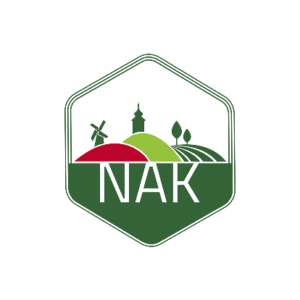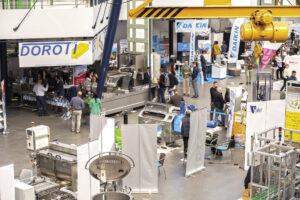Bringing industry players together is crucial
Our magazine has interviewed Balázs Győrffy, president of the Hungarian Chamber of Agriculture (NAK).

This article is available for reading in Trade magazin 2024/6-7
![]() – NAK is the main umbrella organisation of the agri-food sector. You have summarised NAK’s 2023 activities in an impressive publication. Can you highlight some of the more important ones?
– NAK is the main umbrella organisation of the agri-food sector. You have summarised NAK’s 2023 activities in an impressive publication. Can you highlight some of the more important ones?

Balázs Győrffy
president
NAK
– We represent the interests of more than 400,000 members. NAK is trying to simplify the regulations that apply to them, in order to help them in their work, in cooperation with our professional partners and the government Last year alone we made 117 proposals for legislative amendments and opinions, but we also regularly defend the interests of our members at EU level. Our network of village farmers has grown to 700 members, NAK has a personal presence in around 1,000 municipalities, and we have assisted with more than 100,000 funding applications.
![]() – What kind of year did Hungarian agriculture close in 2023, what do the figures show?
– What kind of year did Hungarian agriculture close in 2023, what do the figures show?
– According to data from the Central Statistical Office (KSH), in 2023 Hungary’s agricultural output exceeded HUF 4.3bn, 6.5% more than a year earlier. Production volume increased by 25%, while output price levels were down 15%. The volume of crop production rose by 44%, but this is a deceptive figure, as the record high growth in arable crops compares to the low base of 2022, a year of severe drought. However, despite better than expected weather in 2022, the quality and quantity of last summer’s harvested crop also came in below expectations. Livestock farming is practically in stagnation, while the sector has considerable untapped potential.
![]() – Farmers are angry all over Europe. Why do they need to take to the streets?
– Farmers are angry all over Europe. Why do they need to take to the streets?
– The direction of the EU’s agricultural policy is very wrong, farmers are rightly unhappy with Brussels and they are desperate. Regulations are unreasonably strict, they make production impossible, EU policies are anti-farmer and third countries are favoured. It is incredible that farmers in the EU have to comply with rules that make production much more expensive, yet these don’t apply to Ukrainian products.

Bringing industry players together is crucial
![]() – The labour market situation is critical in many sectors of the national economy. Is it the same in agriculture? How well can vocational training keep pace with the demand?
– The labour market situation is critical in many sectors of the national economy. Is it the same in agriculture? How well can vocational training keep pace with the demand?
– In Hungary the system of vocational and adult education and training has been completely overhauled over the last few years, in order to respond to the ever-changing challenges of the economy and the labour market. The methodology of training has also been renewed, with close cooperation between the business sector and schools. There are labour shortages in a number of trades, the largest being in the manufacturing and food processing machinery operator positions. In April 2024 we organised the Trade Star Festival, popularising jobs in agriculture.
![]() – From this year several development grants are available to food producers. What can we expect from these?
– From this year several development grants are available to food producers. What can we expect from these?
– Partly as a result of our initiative, the government has decided to provide a maximum of 80% national co-financing for rural development support. This will make HUF 2,900bn available, from which only one fifth is EU funding and four fifths are from national sources. In 2024 69 agricultural and rural development grants will be open. Within the framework of CAP 2021-2027, the government is giving priority to developing the food industry and increasing its competitiveness. Around HUF 750bn is available over the 7-year period and this level of funding could generate nearly HUF 1,000bn of net investment in food processing development. //
Related news
More than 100 Hungarian farmers also demonstrated in Brussels
🎧 Hallgasd a cikket: Lejátszás Szünet Folytatás Leállítás Nyelv: Auto…
Read more >Hungarian champagne crowns the end-of-year holidays!
🎧 Hallgasd a cikket: Lejátszás Szünet Folytatás Leállítás Nyelv: Auto…
Read more >NAK: Domestic producers await customers with an ample supply of all pine species
🎧 Hallgasd a cikket: Lejátszás Szünet Folytatás Leállítás Nyelv: Auto…
Read more >Related news
Christmas shock in commerce: for the first time, we can pay with bank cards in fewer places
🎧 Hallgasd a cikket: Lejátszás Szünet Folytatás Leállítás Nyelv: Auto…
Read more >Hungarian Confectionery Manufacturers Association: trends in 2025 and prospects for 2026
🎧 Hallgasd a cikket: Lejátszás Szünet Folytatás Leállítás Nyelv: Auto…
Read more >Most grocery chains will be open until noon on December 24th
🎧 Hallgasd a cikket: Lejátszás Szünet Folytatás Leállítás Nyelv: Auto…
Read more >






